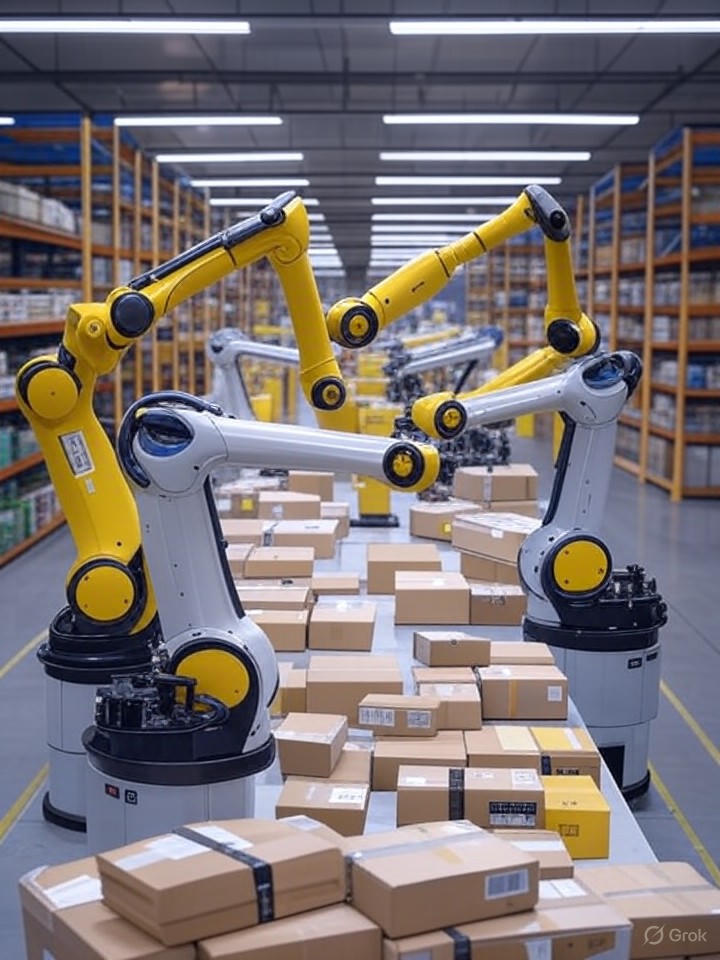Amazon.com Inc. is accelerating its push for ultra-fast delivery, leveraging artificial intelligence to redefine e-commerce efficiency in a bid to outpace rivals and captivate consumers. In recent announcements, the company has outlined ambitious plans to integrate AI more deeply into its logistics network, aiming to deliver packages in hours rather than days. This strategy comes as CEO Andy Jassy envisions an AI-driven future where technology not only speeds up operations but also enhances customer experiences across the board.
Central to these efforts is Amazon’s rollout of advanced AI tools for route optimization and predictive inventory management. By analyzing vast datasets on consumer behavior and traffic patterns, these systems promise to shave precious time off delivery windows, potentially making same-day shipping the norm for Prime members.
AI-Powered Logistics Revolution
Reports from Customer Experience Dive highlight how Amazon is sharpening its focus on delivery speed while expanding AI applications, including the broader rollout of Alexa+ to users. This voice assistant upgrade, powered by generative AI, allows for more intuitive interactions, such as real-time package tracking and personalized shopping recommendations, which indirectly boost delivery efficiency by streamlining order fulfillment.
Industry insiders note that Amazon’s investments in robotics and AI forecasting are yielding tangible results. For instance, generative mapping technologies enable precise demand prediction, ensuring warehouses are stocked optimally to minimize delays. According to a June 2025 update on AboutAmazon.com, these innovations have improved delivery location accuracy and employee productivity, benefiting both customers and staff.
Investments in Robotics and Sustainability
Amazon’s commitment extends to a massive $25 billion investment in warehouse automation, as reported in posts on X (formerly Twitter), where analysts discuss the company’s aim for $10 billion in annual savings by 2030 through robotics-led efficiencies. This includes deploying over a million robots, with AI models like DeepFleet enhancing robot performance by 10%, leading to faster item processing and reduced shipping costs.
Sustainability is another pillar of Amazon’s AI ambitions. Supply Chain Magazine details how the company is using AI to cut emissions in its supply chain, aligning with a net-zero goal by 2040. By optimizing routes and inventory, Amazon reduces unnecessary truck miles, combining speed with environmental responsibility—a dual win in an era of heightened scrutiny on corporate carbon footprints.
Competitive Edge and Future Outlook
CEO Jassy’s vision, as echoed in recent earnings calls covered by AInvest.com, positions Amazon as a leader in AI-driven e-commerce. The company’s Q2 2025 results showed outbound shipping costs rising only 6% against 12% unit growth, thanks to AI efficiencies that enabled 30% more same- or next-day deliveries year-over-year.
Looking ahead, Amazon is testing humanoid robots to further automate fulfillment centers, potentially slashing delivery costs even more. Sentiment on X suggests enthusiasm among investors, with mentions of in-house AI chip shipments rising 70% year-over-year to support AWS demands. However, challenges remain, including regulatory hurdles on AI ethics and competition from Walmart, which is also ramping up AI for three-hour deliveries to 95% of U.S. households by year’s end, per Axios reports.
Broader Implications for E-Commerce
This AI infusion isn’t just about speed; it’s reshaping how Amazon interacts with its ecosystem. Generative AI in customer service and ads, as noted in Technology Magazine, improves satisfaction while accelerating sustainability efforts. For industry insiders, Amazon’s moves signal a shift toward “agentic AI”—autonomous systems that handle complex tasks like inventory placement without human intervention.
As Amazon pursues these ambitions, the ripple effects could transform global logistics. Rivals must innovate or risk obsolescence, while consumers stand to gain from unprecedented convenience. Yet, the true test will be balancing rapid expansion with ethical AI deployment, ensuring that speed doesn’t compromise privacy or job security in the long run.




 WebProNews is an iEntry Publication
WebProNews is an iEntry Publication